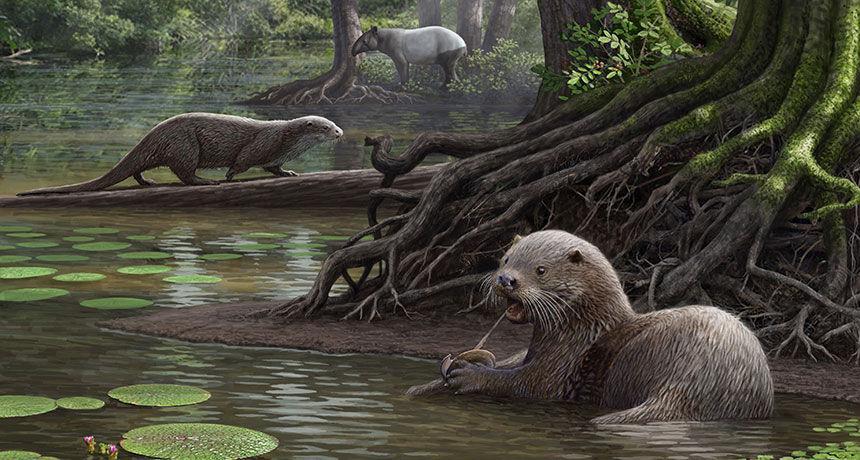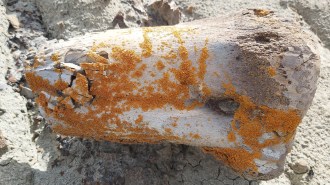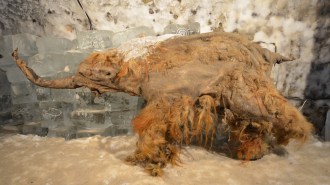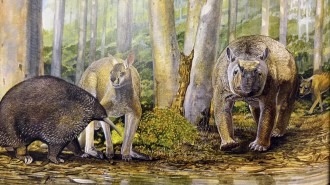Ancient otter of unusual size unearthed in China

OUT OF THE SWAMP Six million years ago, giant otters (illustrated above eating a clam and walking) may have lived in the lush swamps of what is now China, and coexisted with tapir (one illustrated in background).
Art by Mauricio Antón







